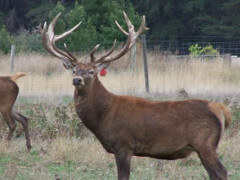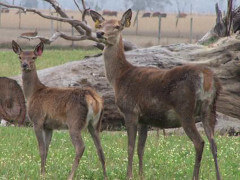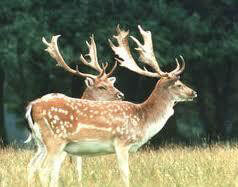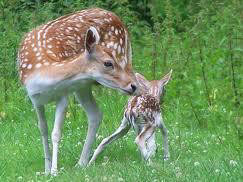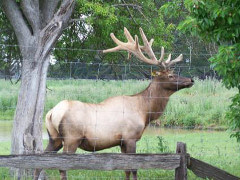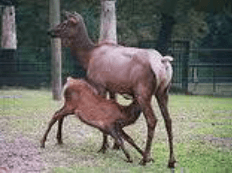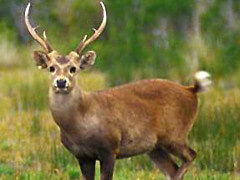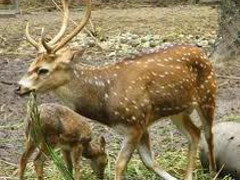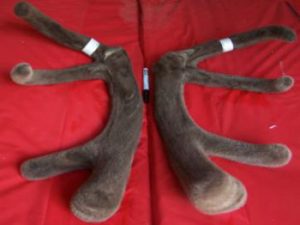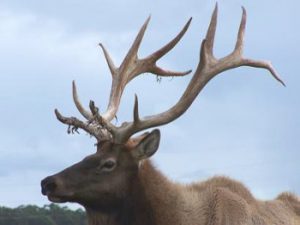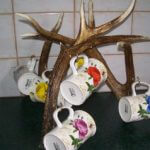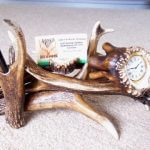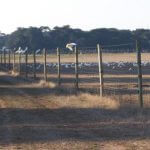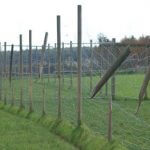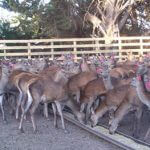Why Deer Farming? Why not!
Farming deer can be a successful and profitable branch of any sheep or cattle farm, it does not necessarily have to be a commercial enterprise on its own, although there is no reason why it can’t be. There are deer farms currently in Australia where sheep and deer graze side by side with no problems.
Deer are an incredibly intelligent and beautiful animal, so different from mainstream stock yet so easily adapted to the mainstream farming systems.
Profitability on commercial deer farms has markedly increased since prices in the velvet and venison markets have stabilized.
The most common products deer are farmed for in Australia are:
Deer Velvet Antler
Venison
Hunting (only in states where legal)
Deer Basics
In Australia the 3 main breeds of deer used for farming are:
Red Deer
Red deer are more commonly farmed in Australia than other species because
- they are a versatile dual-income animal
- are the main velvet antler producing breed of deer
- they are well adapted to our climate
Fallow Deer
Fallow deer are also a dual purpose animal, but for different reasons:
- mostly farmed for venison production
- being a smaller bodied animal, more animals can be run per acre than red deer
- in states where allowed, specially bred bucks are grown especially for private hunting preserves
Canadian Elk (also known as Wapiti)
The farming of Canadian Elk, also known as Wapiti, in Australia is not very common. They are the largest of deer species used for venison and velvet antler production but can be tricky to look after as they are susceptible to worms and copper deficiency.
Elk are a great terminal sire to be used over large red hinds for the purpose of meat production – producing optimal carcass sizes earlier.
Sika
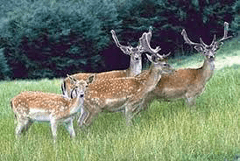
Currrently there is a very limited number of Sika in Australia, all on farms
- they are a dual-income animal
- they grow less velvet per head but sika velvet is more highly valued in Asia and premium prices are paid.
- they are an excellent meat body, with well built carcasses and a solid hind quarter.
Rusa (wild and farmed)
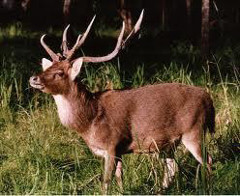
Most Rusa deer farms were located in QLD.
Generally Rusa were only farmed for meat – they are small in the front but very meaty in the hindquarter.
Rusa are easier handled in larger mobs, especially in yards.
In the past, Rusa have not been farmed for velveting purposes.
Other Deer Species in Australia
These species are all mostly wild.
What is Velvet ?
Velvet antler is the name given to the developing antler of deer. Each year in spring the stags naturally cast last years hard, calcified antlers to grow a new set. At approximately 55-65 days of growth, the developing antler (velvet) is ready to be harvested.
If left on the stags, it will grow and calcify into hard bone with sharp, pointy tips which is used in the rut to fight other stags.
On farms, the velvet is harvested under strictly controlled regulations with animal welfare of the utmost importance. You must be registered with the NVAS (National Velvet Accreditation Scheme) to be able to harvest velvet.
Stags are injected with aneasthetic (same as used by dentists) at the base of the antlers before harvest to ensure that absolutely no pain is felt. Once antlers are removed, stags wander back to paddocks and continue grazing.
Velvet is a food product and thus must be treated as such—once velvet weight / grade and animal ID is recorded, it is immediately transferred to the freezer.
The actual medical benefit is the inside of the velvet antler, not the velvety outer skin as commonly believed.
Velvet Economics
The international velvet market has historically been quite volatile, reaching over $230/kg 30 years ago to just $30/kg about 12 years ago.
New Zealand being one of the biggest producers of velvet has since put steps in place to eliminate the roller coaster prices and prices have now stabilized.
- There is one main cut per stag and the regrowth per year.
- In 2012 /13, the average price per kg (across all grades) was approximately $78. If the average cut across the mob is 4kg/head, each stag will make $312.
- Stocking rate example for the South Western region of Victoria, stags can be run at a rate of 1.4 to the acre making a gross income of $437 per acre.
- If there are 280 stags on 200 acres, even if ave / head is a ,little lower at 3.8kg, The annual gross velvet income at that price would be approx $83,000.
- There used to be over 80 different grades, all priced differently which all velvet had to be graded into. This has now been simplified with higher prices reflecting timing of cut and velvet quality.
What is Velvet used for?
Deer Velvet has been prized by the Chinese for its powerful health-promoting properties for over 2000 years. Western, as well as Asian scientists world wide are now starting to prove some of those ancient beliefs to be true.
Deer Velvet is said to:
- Maintain the body’s general well being
- Boosting the body’s natural immune system in order to support against colds and flu
- Assists with good joint care, bone density and improved mobility
- Improve the body’s stamina, strength and athletic performance with faster recovery time. It is used in many countries by Athletes, especially in extreme sports.
- Natural source of proteins, glucosamine, chondroitin, amino acids, minerals, Omega 3 and Omega 6 and IGF-1 and IGF-2
- Velvet antler contains nearly 40 key compounds including:
- Chondroitin sulfate, a carbohydrate that attracts fluid into proteoglycan molecules and protects cartilage from destructive enzymes
- Glucosamine sulfate, the building block of cartilage and a reported anti-inflammatory easily absorbed by the body
- Lipids, to build cells and boost energy
- Prostaglandins, powerful anti-inflammatory agents
- Selenium, which reduces infections, and protects blood cells, the heart, liver and lungs
- Calcium, for bones, teeth, nerves, blood clotting and muscle contraction
- Collagen, a major structural protein that binds joints together and serves as a main component of articular cartilage
- Phosphorus, which helps build bones and teeth, and is a key component of metabolic reaction
- Polysaccharides, which helps regulate blood clotting activity
- All essential amino acids, the building blocks of protein
- Potassium, for nerves and muscles
- Magnesium, to help cells restore and release energy
- Bone morphogenetic protein, which speeds bone growth
- Growth factors, which aid in cartilage cell development.
Source: http://www.vitaminsinamerica.com/news/velvet.htm
Hard Antler Use
Leaving velvet to calcify into hard antler is not recommended and strongly discouraged on deer farms as they can be lethal to us and other stock, especially during the rut (the breeding season).
- Having said that, some velvet growers believe that leaving the first set of antlers on young stags (spikers) can help strengthen the pedicles and encourage better velvet growth in later years.
- Spikers may not be as hormonal during the rut as older stags, but extra caution must be taken if spikes have been left on.
- The value of cast hard antlers is as little as $10 -$15 a kg so it is not viable to leave velvet go hard, however some true collectors have been known to pay hundreds of dollars for a high scoring matching pair.
- Markets in Australia are slowly growing for decorative antler products, which can carry high price tags….. all it needs is a little imagination.
Farmed Venison
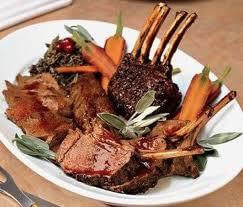
- Farmed venison is a very mild tasting, healthy red meat as only young animals are sourced for quality meat production.
- Wild shot venison can be very gamey as the age of the animal is unknown and wild males are also usually hunted during the rut when in full hard antler and the meat can become very strong.
- General recommendation is not to overcook it, venison can pretty much be prepared the same way as beef, from roasts, stews, stirfries, BBQ, sausages etc.
- Venison has been proven to be low in fat and cholesterol and high in iron and protein.
- Old stags can still be utilized for meat as they are exported to European markets that require the strong gamey taste.
- Venison produced in Australia is exported to Europe and currently there is only one EU approved export abattoir.
- Export markets have also been developed to Asia and the Middle East.
Deer Farm Set Up
Deer need HIGH fences (netting) – This is a real bonus if also needing to keep kangaroos OUT!
- A hot wire is found to be useful to prevent posts from being rubbed away by stags….
- Well designed, workable yards will make handling a lot easier and safer, as well as a crush to assist with velveting.
- Good cattle yards can be easily converted to workable deer yards.
- Sheep and cattle farms can slowly set up deer paddocks, a couple of paddocks at a time to accommodate growing deer numbers. This will spread out the set up costs over time and help cash flow.
- Quality bred stock and genetic improvements assist in increasing velvet production / carcase size, thus increasing profitability on a per animal / per acre basis.
View this article in pdf format or download the powerpoint show below:
Why Farm Deer Presentation – pdf version (1.5Mb)
Why Farm Deer Presentation – powerpoint (6MB)

